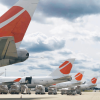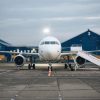 The global market of light helicopters remains on a steady growth path. One of the largest aircraft manufacturers Robinson Helicopter Company has reported producing over 5500 R44’s to date with a rising number of orders coming from overseas. As the demand keeps growing, naturally one may wonder what makes light helicopters so attractive to an increasing number of industry players.
The global market of light helicopters remains on a steady growth path. One of the largest aircraft manufacturers Robinson Helicopter Company has reported producing over 5500 R44’s to date with a rising number of orders coming from overseas. As the demand keeps growing, naturally one may wonder what makes light helicopters so attractive to an increasing number of industry players.
According to Honeywell Forecast, 4800–5500 civilian-use helicopters will be delivered during the period of 2014–2018. Latin America continues to be ahead of all regions in terms of new purchase rates, with up to 32 percent of respondent fleets slated for turnover with a new helicopter replacement or addition. A large majority of machines to enter the market are light helicopters. The product class continues to be the most popular one, as such models as Airbus EC130/AS350 series, Bell 407 and Robinson R66 are still the most frequently mentioned models on the order sheets.
In the meantime, other regions are also showing a growing interest in light helicopters. For instance, this year the Indonesian Army has already been delivered its first Airbus lightweight rotorcraft – the first in a fleet of 12 which will equip this military service with advanced capabilities in attack missions. And Indonesian army is not the only military institution to report welcoming light helicopters to its fleet. Last month the Royal Jordanian Air Force (RJAF) chose Robinson Helicopter Company’s R44 Raven IIs to replace its fleet of Hughes 500D helicopters that have been in service since 1981. Eight white R44s will be used for primary helicopter training at the King Hussein Air College in Mafraq, Jordan.
“Another reason for light helicopter market growth is the increasing number of wealthy people, especially in the emerging regions. They fully appreciate the fact that time is money, so fast and  convenient travel is one of the key factors when choosing the mode of transportation. Due to rapid urbanization traffic congestion is an increasingly pressing issue in most cosmopolises, so getting from point A to point B by car is becoming more and more difficult. A similar situation can be observed in many suburbs. Therefore, the use of helicopters for not only personal and business travelling but also public services is a viable solution,” comments Anatolij Legenzov, the CEO of Helisota. “Under the circumstances, purchasing a mid or heavy helicopter to commute in the city is not an option, as the existing infrastructure is not suitable for such machines. They are also simply too large and noisy. However, the use of light helicopters is a great alternative.”
convenient travel is one of the key factors when choosing the mode of transportation. Due to rapid urbanization traffic congestion is an increasingly pressing issue in most cosmopolises, so getting from point A to point B by car is becoming more and more difficult. A similar situation can be observed in many suburbs. Therefore, the use of helicopters for not only personal and business travelling but also public services is a viable solution,” comments Anatolij Legenzov, the CEO of Helisota. “Under the circumstances, purchasing a mid or heavy helicopter to commute in the city is not an option, as the existing infrastructure is not suitable for such machines. They are also simply too large and noisy. However, the use of light helicopters is a great alternative.”
Another reason behind the rising interest in light helicopters is their low operating costs. For instance, the overall cost of operating an R44 is approx. USD 220 per hour. It is not much higher than that of driving an expensive fast car and can be even lower taking into account the costly time saved when travelling by air.
“Finally, maintaining a light helicopter is not that pricey as well. As the demand for such rotorcraft keeps rising, MRO providers are ready to serve not only new, but also older generation models. Owners of the latter may also choose to refurbish their helicopters instead of purchasing expensive new machines. As the price of a new R44 may reach around USD 480 000, updating an older yet still reliable helicopter makes great sense. After all, it can be equipped with the same technology as the one found in the newest rotorcraft, including Garmin and Aspen glass avionics, etc. And it is way cheaper. For example, installing a navigation system in an R44 may cost on average circa USD 15 000. Of course, the final price depends on the configuration and quality of the equipment desired,“ shares the CEO of Helisota.





